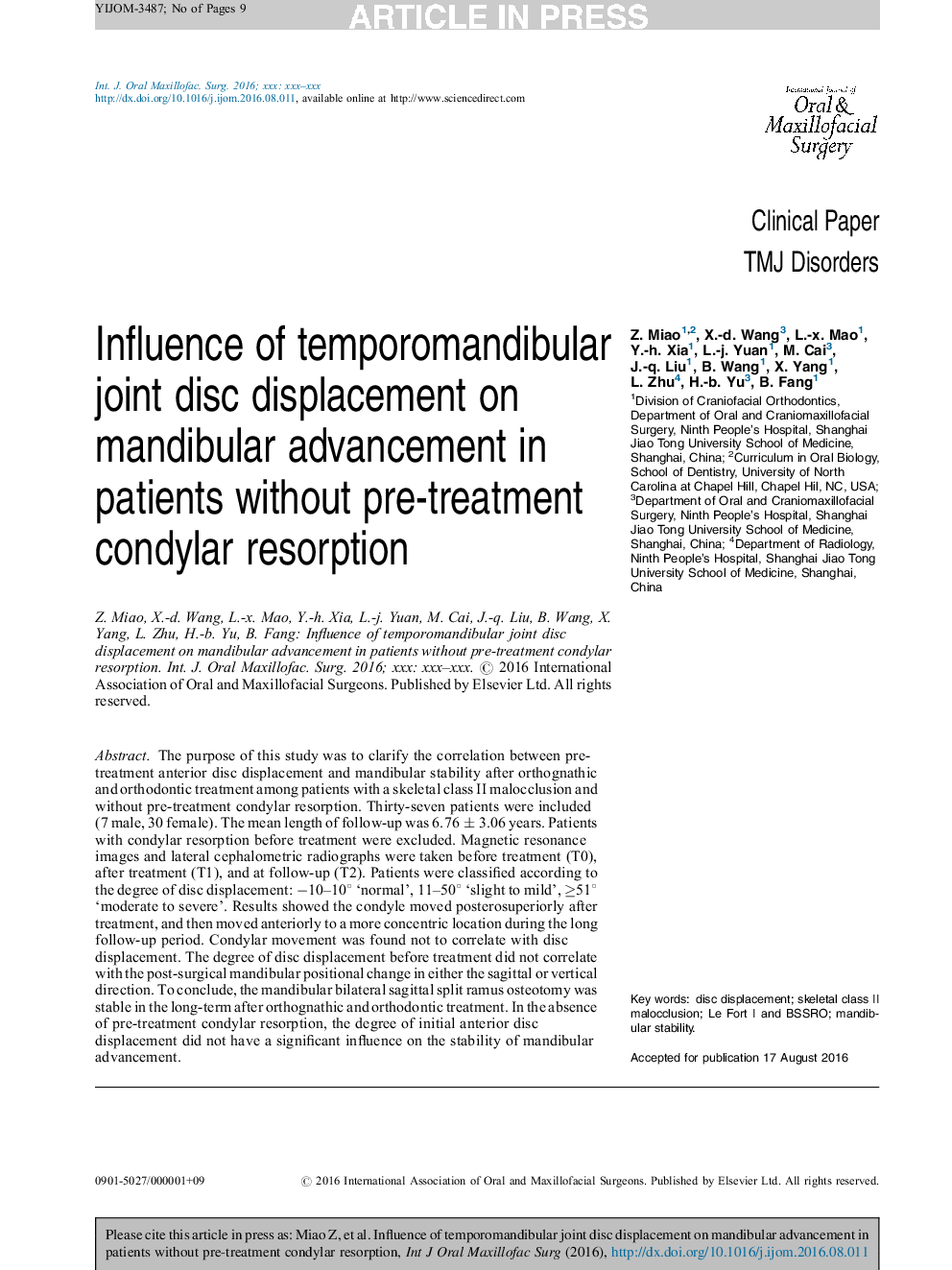| Article ID | Journal | Published Year | Pages | File Type |
|---|---|---|---|---|
| 5639028 | International Journal of Oral and Maxillofacial Surgery | 2017 | 9 Pages |
Abstract
The purpose of this study was to clarify the correlation between pre-treatment anterior disc displacement and mandibular stability after orthognathic and orthodontic treatment among patients with a skeletal class II malocclusion and without pre-treatment condylar resorption. Thirty-seven patients were included (7 male, 30 female). The mean length of follow-up was 6.76 ± 3.06 years. Patients with condylar resorption before treatment were excluded. Magnetic resonance images and lateral cephalometric radiographs were taken before treatment (T0), after treatment (T1), and at follow-up (T2). Patients were classified according to the degree of disc displacement: â10-10° 'normal', 11-50° 'slight to mild', â¥51° 'moderate to severe'. Results showed the condyle moved posterosuperiorly after treatment, and then moved anteriorly to a more concentric location during the long follow-up period. Condylar movement was found not to correlate with disc displacement. The degree of disc displacement before treatment did not correlate with the post-surgical mandibular positional change in either the sagittal or vertical direction. To conclude, the mandibular bilateral sagittal split ramus osteotomy was stable in the long-term after orthognathic and orthodontic treatment. In the absence of pre-treatment condylar resorption, the degree of initial anterior disc displacement did not have a significant influence on the stability of mandibular advancement.
Keywords
Related Topics
Health Sciences
Medicine and Dentistry
Dentistry, Oral Surgery and Medicine
Authors
Z. Miao, X.-d. Wang, L.-x. Mao, Y.-h. Xia, L.-j. Yuan, M. Cai, J.-q. Liu, B. Wang, X. Yang, L. Zhu, H.-b. Yu, B. Fang,
